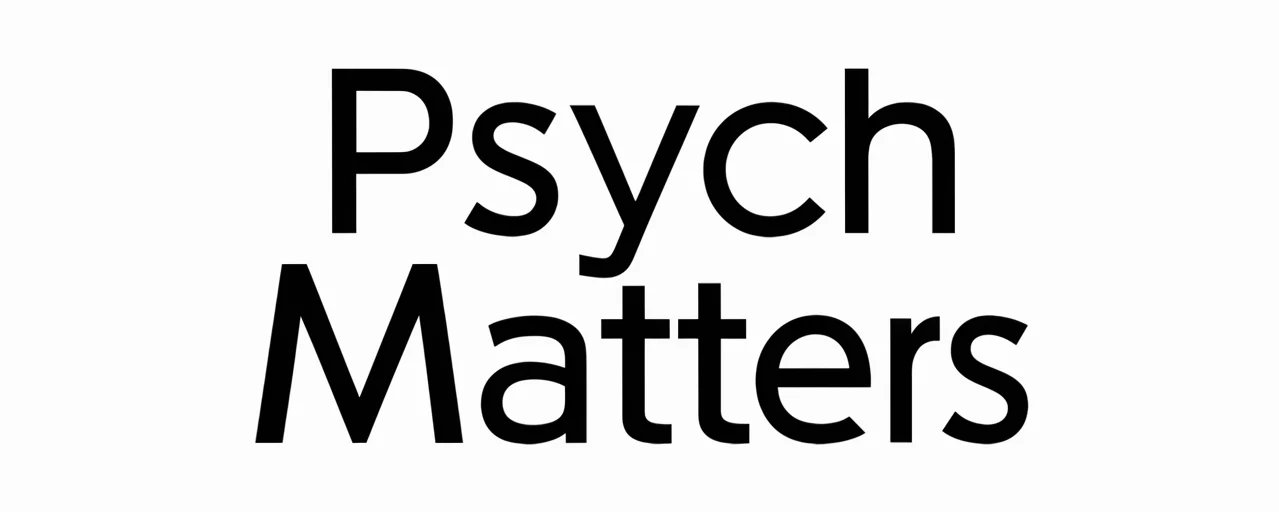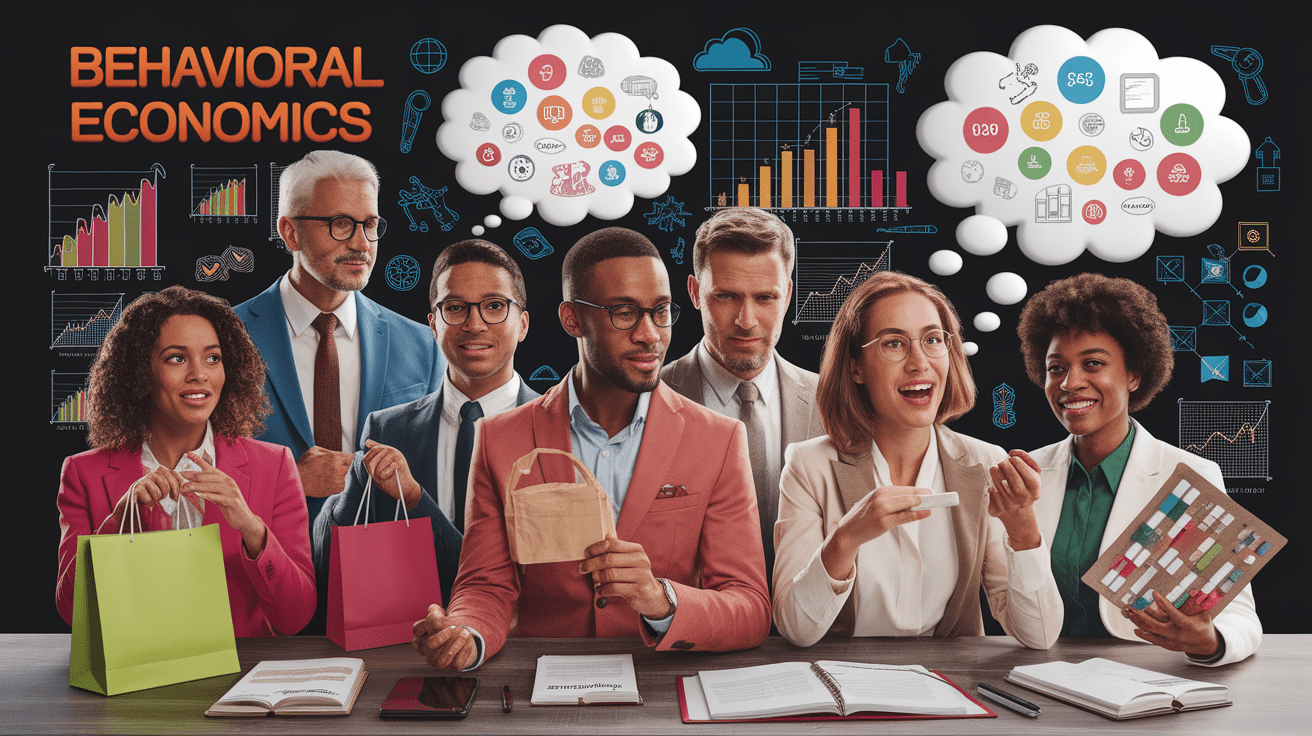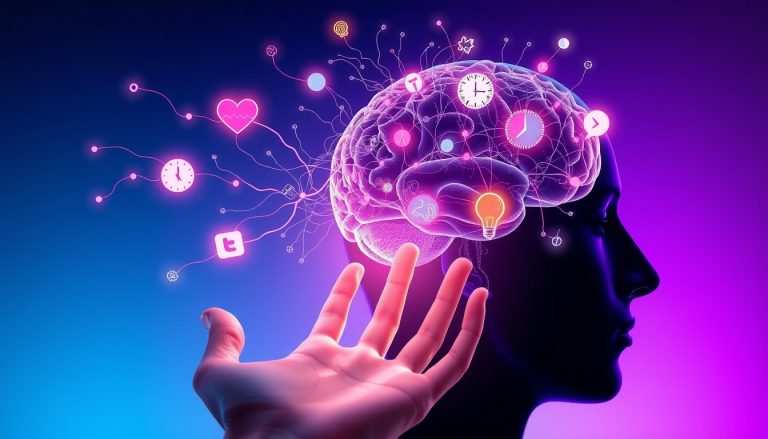Understanding Behavioral Economics: The Human Side of Decision-Making
Welcome to the Human Side of Economics
Traditional economics has long operated under the assumption that humans are rational actors who consistently make decisions in their best interest. However, anyone who has ever impulse-purchased an expensive gadget or procrastinated on important financial planning knows this idealized view doesn’t match reality. Enter behavioral economics, a revolutionary field that bridges the gap between economic theory and human psychology.
Behavioral economics is a branch of economics that studies the psychological, social, and emotional influences on economic decisions. Unlike traditional economics, which assumes that people make rational choices based on their self-interest, behavioral economics recognizes that individuals often make irrational or biased choices due to various cognitive biases, emotions, and contextual factors.
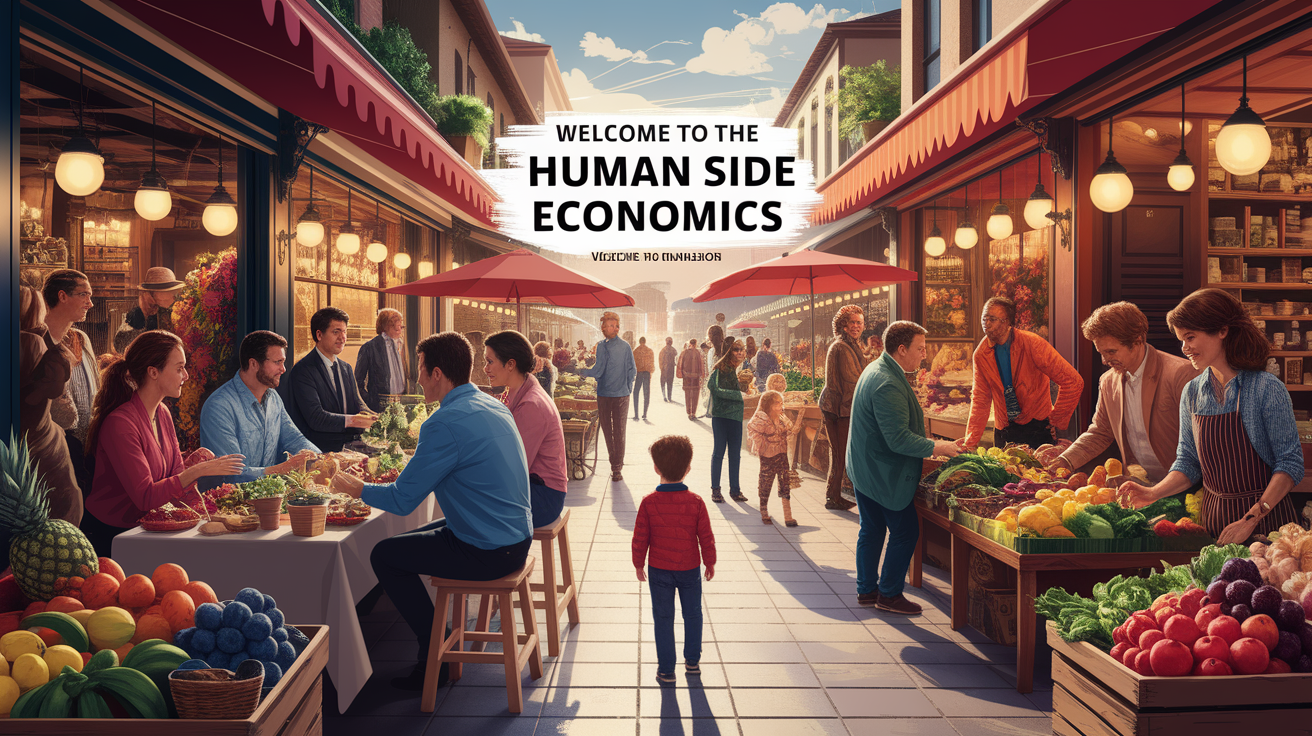
This field emerged from the recognition that real human behavior often deviates significantly from the predictions of classical economic models. The discipline gained significant momentum through the groundbreaking work of researchers like Daniel Kahneman and Amos Tversky, whose Prospect Theory fundamentally challenged traditional utility theory. Their research, along with contributions from Richard Thaler and other pioneers, has transformed our understanding of economic decision making.
The difference between behavioral economics and standard economics lies in their fundamental assumptions about human rationality. While traditional economic models assume perfect information processing and consistent preferences, behavioral economics acknowledges bounded rationality—the idea that our cognitive limitations, emotions, and environmental factors significantly influence our choices. This approach incorporates insights from understanding human behavior and mental processes, recognizing that decision-making is far more complex than purely rational calculations.
Core Principles That Drive Our Decisions
Behavioral economics is guided by several key principles and concepts that explain why we often make decisions that seem irrational from a traditional economic perspective. Understanding these principles provides crucial insights into the psychology economics intersection and helps explain predictably irrational behavior patterns.
Loss Aversion and the Endowment Effect
One of the most powerful concepts in behavioral economics is loss aversion—the tendency for people to prefer avoiding losses over acquiring equivalent gains. Research shows that the psychological impact of losing $100 is typically twice as strong as the pleasure of gaining $100. This principle manifests in various ways, from why people hold onto losing stocks too long to why free trials are so effective in marketing.
Closely related is the endowment effect, where people value items more highly simply because they own them. This cognitive bias helps explain why negotiations can be difficult and why people often overvalue their possessions when trying to sell them.
Framing Effects and Choice Architecture
The framing effect demonstrates how the way information is presented can dramatically influence decisions, even when the underlying facts remain identical. For example, a medical treatment described as having a “90% survival rate” is perceived more favorably than one with a “10% mortality rate,” despite being statistically equivalent.

This principle has profound implications for choice architecture—the practice of organizing the context in which people make decisions. By understanding framing effects, organizations and policymakers can present information in ways that lead to better outcomes without restricting choice.
Heuristics and Mental Shortcuts
Heuristics are mental shortcuts that people use to make decisions quickly and efficiently. While these cognitive shortcuts often serve us well in daily life, they can also lead to systematic biases in decision making. Common heuristics include:
- Anchoring: Over-relying on the first piece of information encountered
- Availability heuristic: Judging probability by how easily examples come to mind
- Representative heuristic: Making judgments based on similarity to mental prototypes
These mental shortcuts explain many seemingly irrational economic behaviors and have significant implications for psychological factors in consumer behavior.
Time Discounting and Present Bias
Behavioral economics also examines how people make intertemporal choices—decisions involving trade-offs between costs and benefits occurring at different times. Time discounting refers to the tendency to value immediate rewards more highly than future ones, often leading to decisions that conflict with long-term interests.
This present bias helps explain why people struggle with saving for retirement, maintaining healthy habits, or sticking to long-term goals. Understanding these patterns is crucial for designing effective interventions in areas like personal finance and public health.
How Behavioral Economists Study Choices
Behavioral economists employ a variety of methods to study human economic behavior, combining traditional economic analysis with insights from psychology and neuroscience. This interdisciplinary approach allows researchers to better understand the mechanisms underlying economic decision making.
Experimental Economics and Field Studies
Laboratory experiments provide controlled environments where researchers can isolate specific variables and observe how they influence decision-making. These studies often reveal systematic deviations from rational choice theory, providing evidence for various cognitive biases and heuristics.
Field experiments take this research into real-world settings, testing whether laboratory findings hold up under natural conditions. These studies are particularly valuable because they capture the complexity and context that may be missing from controlled laboratory environments.
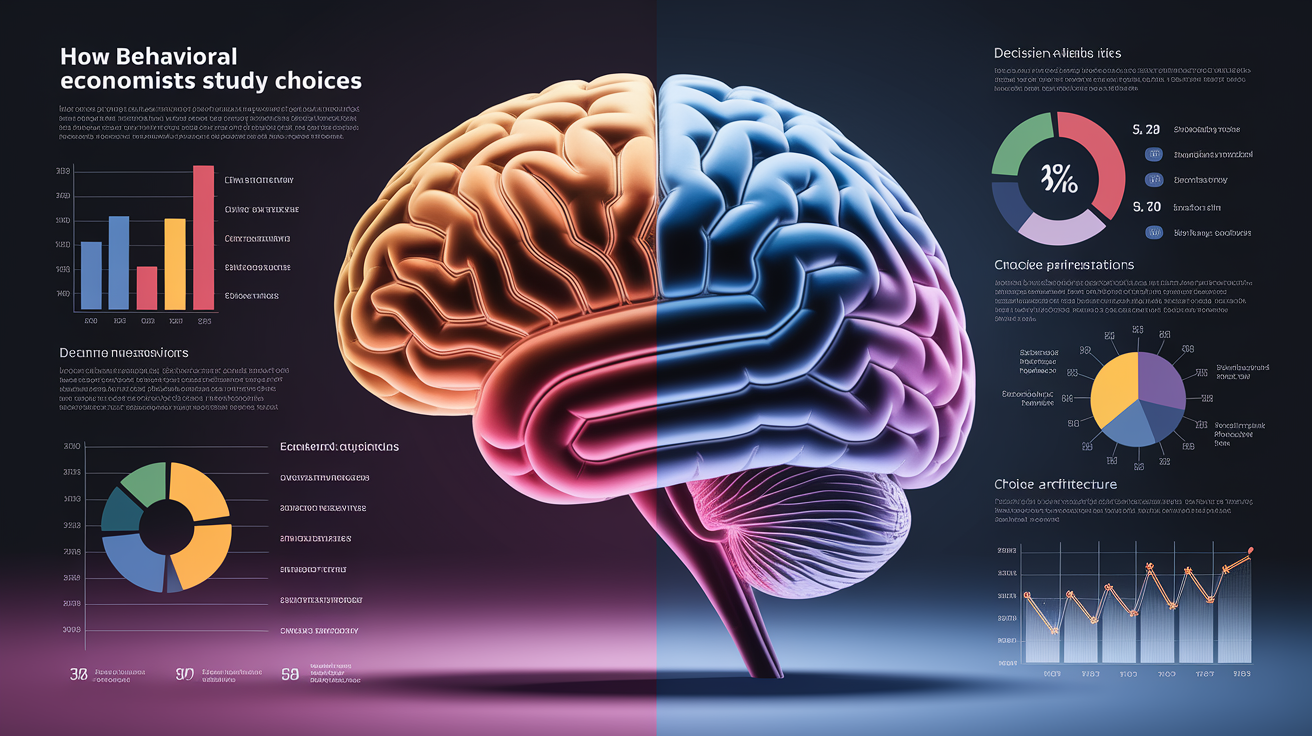
Surveys and Observational Data
Large-scale surveys and analysis of existing datasets allow researchers to study economic behavior across diverse populations and extended time periods. This approach helps identify patterns that might not be apparent in smaller experimental studies and provides insights into how demographic and cultural factors influence economic choices.
Neuroeconoimcs and Emotional Analysis
The integration of neuroscience techniques, such as brain imaging, has given rise to neuroeconomics—a field that examines the neural basis of economic decision making. Research on the role of emotions in decision-making has revealed how feelings and emotional states significantly impact economic choices, often overriding rational analysis.
This research demonstrates that emotional psychology plays a crucial role in economic decisions, from impulsive purchases to investment choices during market volatility.
Statistical Analysis and Modeling
Behavioral economists use sophisticated statistical techniques to analyze complex datasets and test theoretical predictions. These methods help identify causal relationships and quantify the magnitude of various behavioral effects, providing the empirical foundation for policy recommendations and practical applications.
Putting Theory into Practice
The insights from behavioral economics have found numerous practical applications in fields such as finance, marketing, and public policy. Understanding how cognitive biases and psychological factors influence decision-making has opened up new possibilities for improving outcomes in various domains.
Behavioral Finance and Investment Decisions
Behavioral finance applies behavioral economics principles to understand financial markets and individual investment behavior. Research has identified numerous cognitive biases that affect financial decisions, including:
- Overconfidence bias: Leading to excessive trading and poor portfolio diversification
- Mental accounting: Treating money differently based on its source or intended use
- Herding behavior: Following crowd decisions rather than independent analysis
Understanding these biases has led to the development of more effective financial products and investment strategies that account for human psychology rather than assuming perfect rationality.

Marketing Psychology and Consumer Behavior
Marketers have embraced behavioral economics insights to better understand and influence consumer behavior. Applications include:
- Using default options to increase enrollment in beneficial programs
- Leveraging social proof to encourage desired behaviors
- Applying scarcity principles to increase perceived value
- Designing loyalty programs that exploit mental accounting biases
These strategies recognize that the psychology of persuasion involves understanding how people actually make decisions rather than how they should make them in theory.
Organizational Behavior and Workplace Applications
Companies have begun applying behavioral economics principles to improve employee decision-making and organizational outcomes. Examples include designing retirement savings programs with automatic enrollment and optimal default contribution rates, structuring performance incentives to account for loss aversion, and using behavioral insights to improve hiring and evaluation processes.
Personal Finance and Savings Behavior
Behavioral economics has provided valuable insights into how to improve individual financial decision-making. Strategies for using behavioral economics to improve savings behavior include automating savings transfers, setting up commitment devices to enforce financial goals, and reframing financial choices to make long-term benefits more salient.
Nudging Decisions for a Better Future
Perhaps no application of behavioral economics has gained more attention than nudge theory, developed by Richard Thaler and Cass Sunstein. Nudging involves influencing behavior through choice architecture while preserving freedom of choice—a concept with profound implications for behavioral public policy.
The Principles of Nudge Theory
Effective nudges typically incorporate several key principles:
- Make it easy: Reduce friction and complexity in desired choices
- Make it attractive: Present options in appealing ways
- Make it social: Leverage social norms and peer influence
- Make it timely: Present choices at optimal moments
These principles recognize that small changes in how choices are presented can lead to significant changes in behavior without restricting individual freedom.
Public Policy Applications
Governments worldwide have established behavioral insights units to apply nudging principles to public policy challenges. Successful applications include:
- Increasing organ donation rates through opt-out rather than opt-in systems
- Improving tax compliance through social norm messaging
- Reducing energy consumption through social comparison feedback
- Increasing vaccination rates through simplified scheduling and reminders
These interventions demonstrate how understanding cognitive biases in decision making can lead to more effective policies that benefit both individuals and society.
Ethical Considerations and Limitations
While nudging offers powerful tools for improving decision-making, it also raises important ethical questions about autonomy, manipulation, and paternalism. Critics argue that nudging can be used to serve the interests of nudgers rather than nudgees, highlighting the need for transparency and accountability in behavioral interventions.

Additionally, behavioral economics findings may not apply universally across cultures and contexts, suggesting the need for careful adaptation and testing of interventions in different settings.
The Future of Behavioral Economics
As our understanding of human psychology and decision-making continues to evolve, behavioral economics is likely to become even more influential. Emerging areas include the application of behavioral insights to digital technologies, the integration of big data and artificial intelligence with behavioral models, and the development of more personalized interventions based on individual psychological profiles.
The field continues to benefit from applying psychological principles to understand and improve human decision-making across various domains.
Key Takeaways
Behavioral economics has fundamentally changed our understanding of economic decision making by recognizing that humans are not the perfectly rational actors assumed by traditional economic theory. Instead, our choices are influenced by cognitive biases, emotions, social factors, and the context in which decisions are presented.
The practical applications of these insights span multiple domains, from improving financial decision-making and consumer experiences to designing more effective public policies and organizational systems. As we continue to deepen our understanding of human psychology and decision-making, behavioral economics will likely play an increasingly important role in creating solutions that work with, rather than against, human nature.
For individuals interested in learning more about behavioral economics, the field offers valuable insights for making better personal decisions while also providing tools for positively influencing the choices of others in professional and civic contexts.
